Culture is closed all over Italy, but cultural workers have no intention of observing in silence the lockout of museums, cinemas, theaters, libraries, since these places are indispensable spaces for society and their communities, as well as places where thousands of people work, and among these thousands many are at risk, given the prolonged emergency, which still leaves the doors closed almost everywhere: with the dpcm of November 3, only archives and libraries that can guarantee their services by reservation have reopened their doors. This is a situation that is becoming less and less sustainable, especially for the least protected workers, the precarious workers who are a key cog in the system, but who are now the hardest hit, since all over Italy many of them have suddenly found themselves out of work as many fixed-term contracts have not been renewed and several collaborations have been terminated. And then there is the situation of general uncertainty hovering over the world of culture, since at the moment there is still no talk of reopenings and there is no shadow of planning, which even now is beginning to be demanded even by the political world (yesterday, for example, Milan’s culture alderman Filippo Dal Corno stressed the importance of beginning to draw up a calendar of reopenings, and Federico Pizzarotti, mayor of Parma, the Italian capital of culture 2020 and 2021, similarly spoke out against the idea of indiscriminate closures).
For all these reasons, today cultural workers took to the streets all over Italy in an orderly, anti-Covid compliant mobilization necessary to underscore the urgency of providing answers to the sector. Indeed, the world of culture does not want to be portrayed as superfluous and expendable; it rejects the idea of being the first to close and the last to reopen, without any planning, and without the slightest mention of culture in the public debate. Workers and women in the cultural sector, but also activists from clubs, grassroots sports, and lots and lots of citizens, who do not accept the government’s treatment of these essential spaces for the life of communities and the country, therefore demonstrated in twelve squares across Italy. Masks, gels and distancing, and culture mobilized in Ancona, Bologna, Florence, Lecce, Milan, Naples, Pisa, Rome, Taranto, Turin, Venice and Vicenza.
Several groups joined the appeal launched by Mi Riconosci? I am a cultural heritage professional: including the Forum dellArte Contemporanea, Art Workers Italia, Link Coordinamento Universitario, Knowledge Network, Wunderkammer Dislocata, Zei Spazio Sociale and dozens of local acronyms. This morning, in the squares of the cities targeted by the demonstration, activists surrounded some cultural venues with red-and-white ribbon and ironic signs that read WARNING! This place is much more dangerous than a shopping mall, some of which are among the most iconic places of Italian culture: from the Uffizi Galleries to the Italian Library of Archaeology and Art History, from the National Archaeological Museum in Naples to the Gallerie dell’Accademia in Venice. Hundreds of people present in the garrisons in the square, and many others who, due to anti-Covid security restrictions and prescriptions, were not able to take to the streets, sent their phototestimony, from Bari to Savona, from Caserta to Cosenza, from Verona to Trieste, using the hashtag #nonètempolibero: the idea behind the mobilization, in fact, is that culture is not free time but is a valuable tool for society, as well as the work of many professionals throughout Italy.
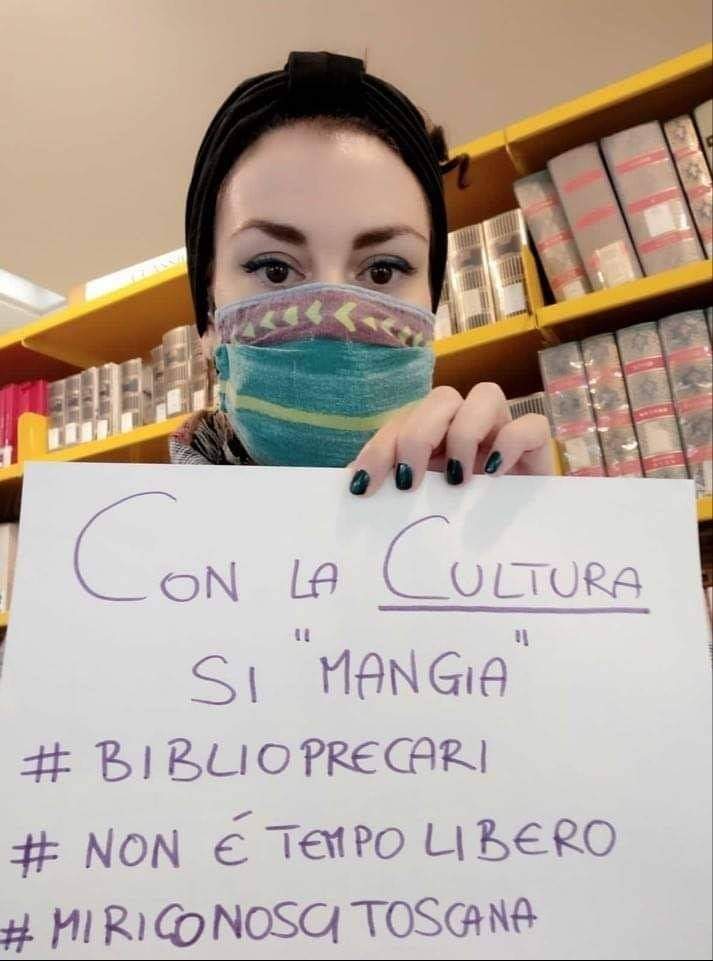 |
| The mobilization of culture |
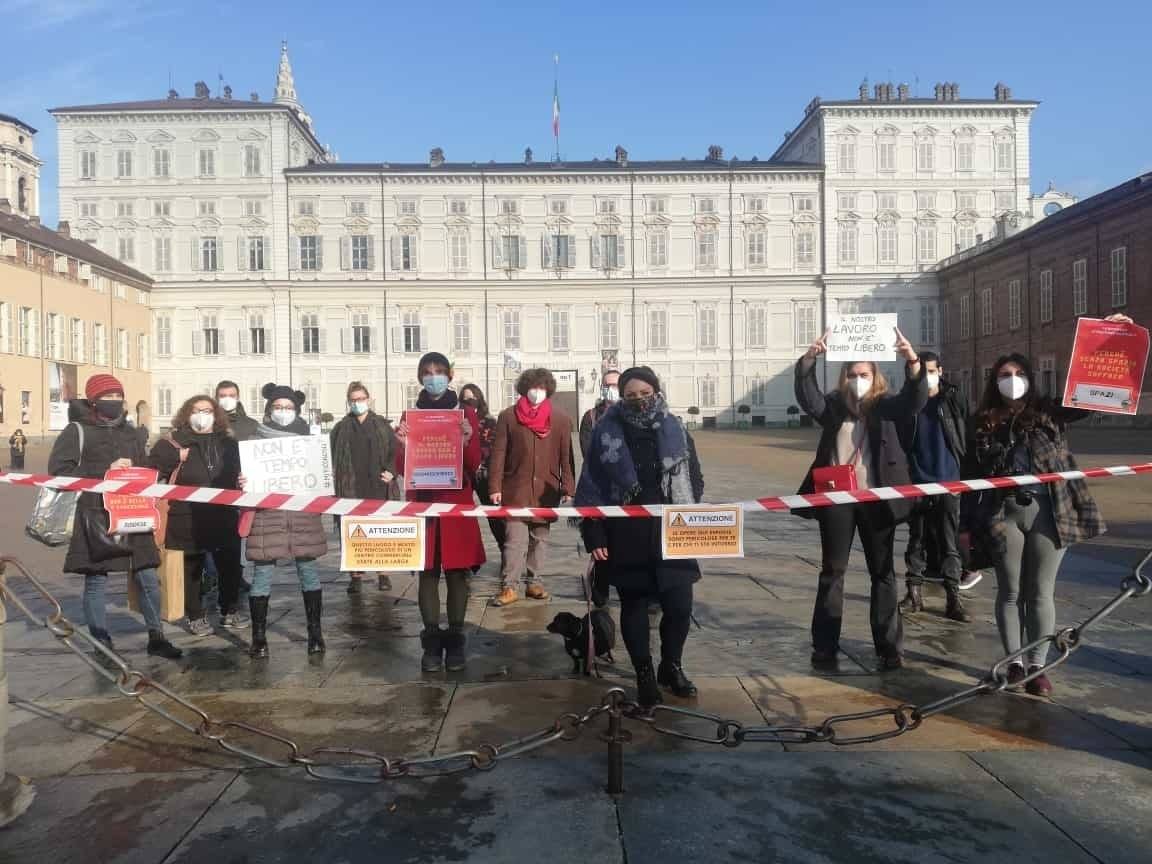 |
| The mobilization of culture: the presidium in Turin |
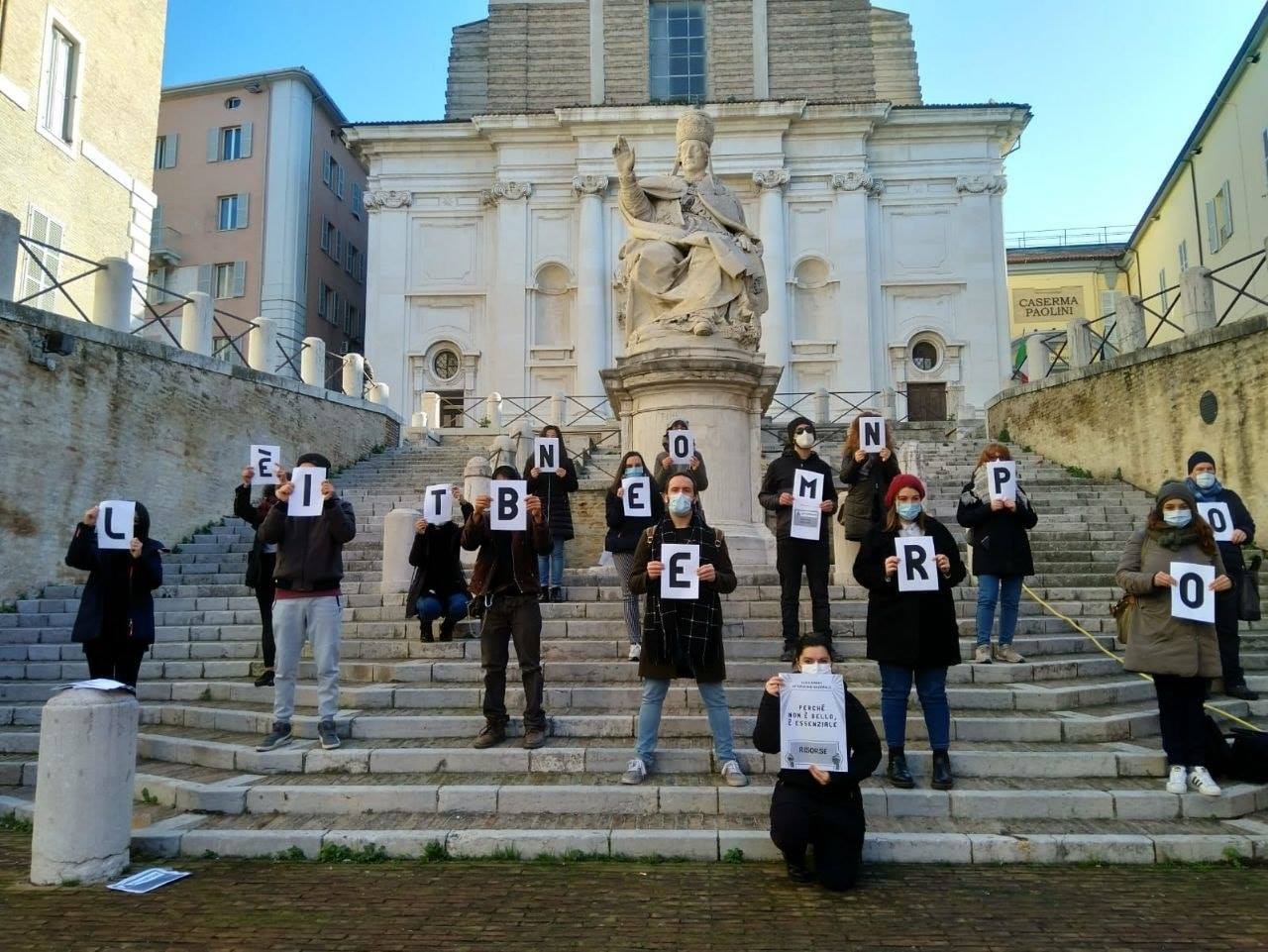 |
| The mobilization of culture: the Ancona garrison |
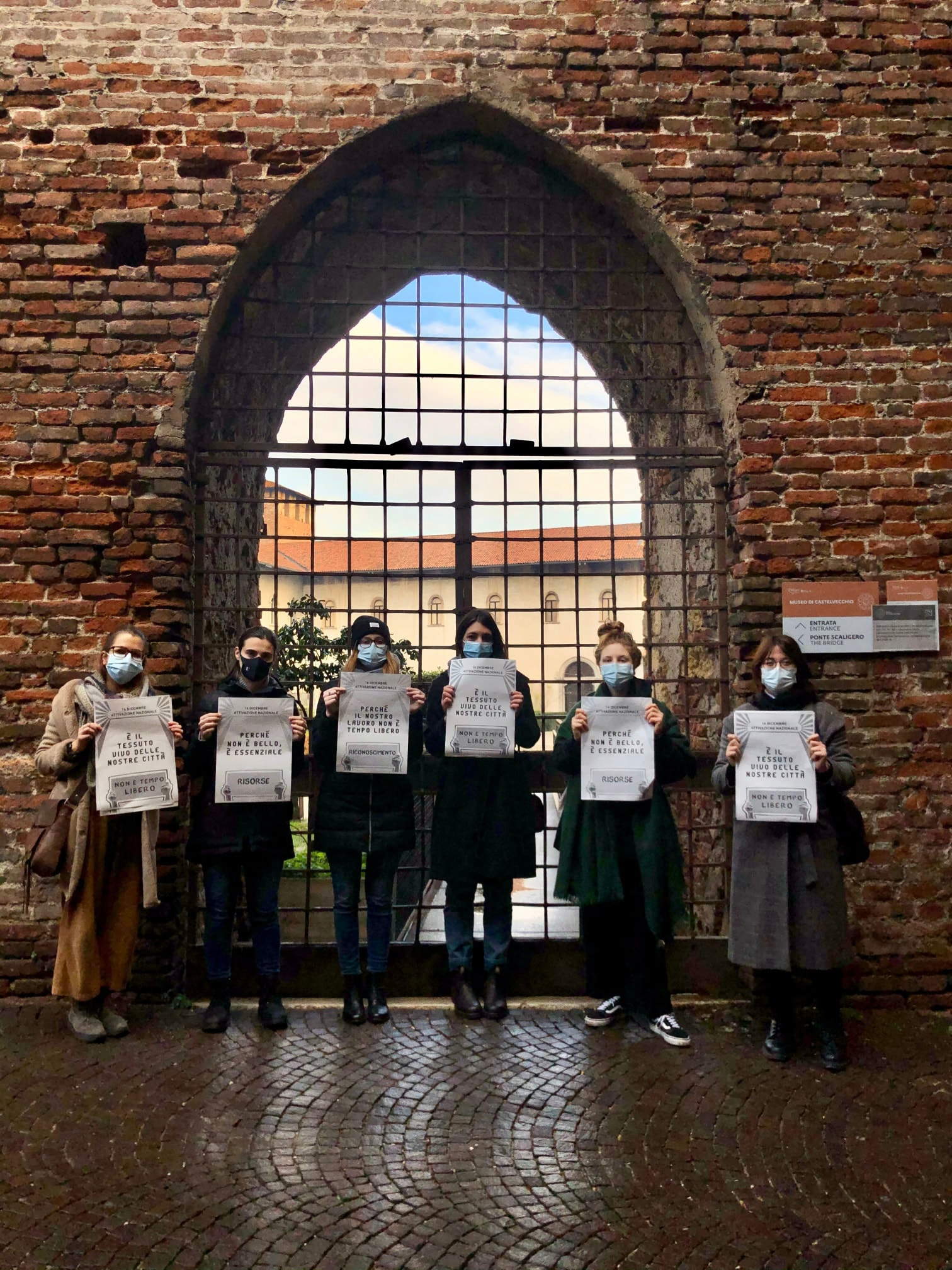 |
| The mobilization of culture: the Verona garrison |
The slogans of the protest were thus spelled out in the squares, From “It’s not free time” to “Recognition, resources, spaces”: and recognition, resources and spaces are what culture professionals are demanding from the government with a petition launched last Dec. 9 on Change.org and which has already surpassed 1,000 signatures. Testimonies and data on the condition of workers in the sector were read in the square: the promoters emphasize that the journey has just begun.
Among the most well attended garrisons was the one in Florence, where about a hundred people descended on the Uffizi square: workers in the cultural sector, but also activists from clubs, grassroots sports, and many citizens who do not accept the government’s treatment of these essential spaces for people’s social lives. “Today’s presidium,” Gaia Ravalli, a Florentine activist from the group Mi Riconosci, let us know, “exceeded all expectations: in these times we did not expect large crowds and, for that matter, it was not even our intention to bring a large crowd of people to the square, it would not have been appropriate given the moment. We received various memberships, there were many speeches, and in short it was a good day, not only from our point of view, but also from the point of view of those who participated. Then there were read testimonies from women and men workers in culture, there was talk about precariousness, people who have lost their jobs and have been left without a salary (there were with us in the square people who, precisely, have lost their jobs or have been living for months on a 350-euro unemployment benefit), with testimonies that were also very emotional. There are also those who have not received a single euro of aid because the contractual situation in our sector is full of gray areas, whose common denominators are exploitation, inadequate compensation and lack of recognition of professionalism.”
Speakers at the Florentine presidium included Tomaso Montanari of the University for Foreigners of Siena, Maria Baruffetti and Mariella Stillitano of the University of Florence, Marianna di Rosa of the group Professione Educatore Museale, Nicoletta Baldini of the Association of Users of the State Archives of Florence, Francesca Conti of the Association Per un’altra città, and Fulvio Cervini of the University of Florence, among others, all of whom joined the event along with Associazione Progetto Firenze, Biblioprecari, and Associazione culturale Isolotto. These were joined by testimonies from precarious workers in the cultural sector. In the initial part of the event, Eike D. Schmidt, director of the Uffizi Galleries, who listened attentively to the activists’ claims and expressed words of solidarity.
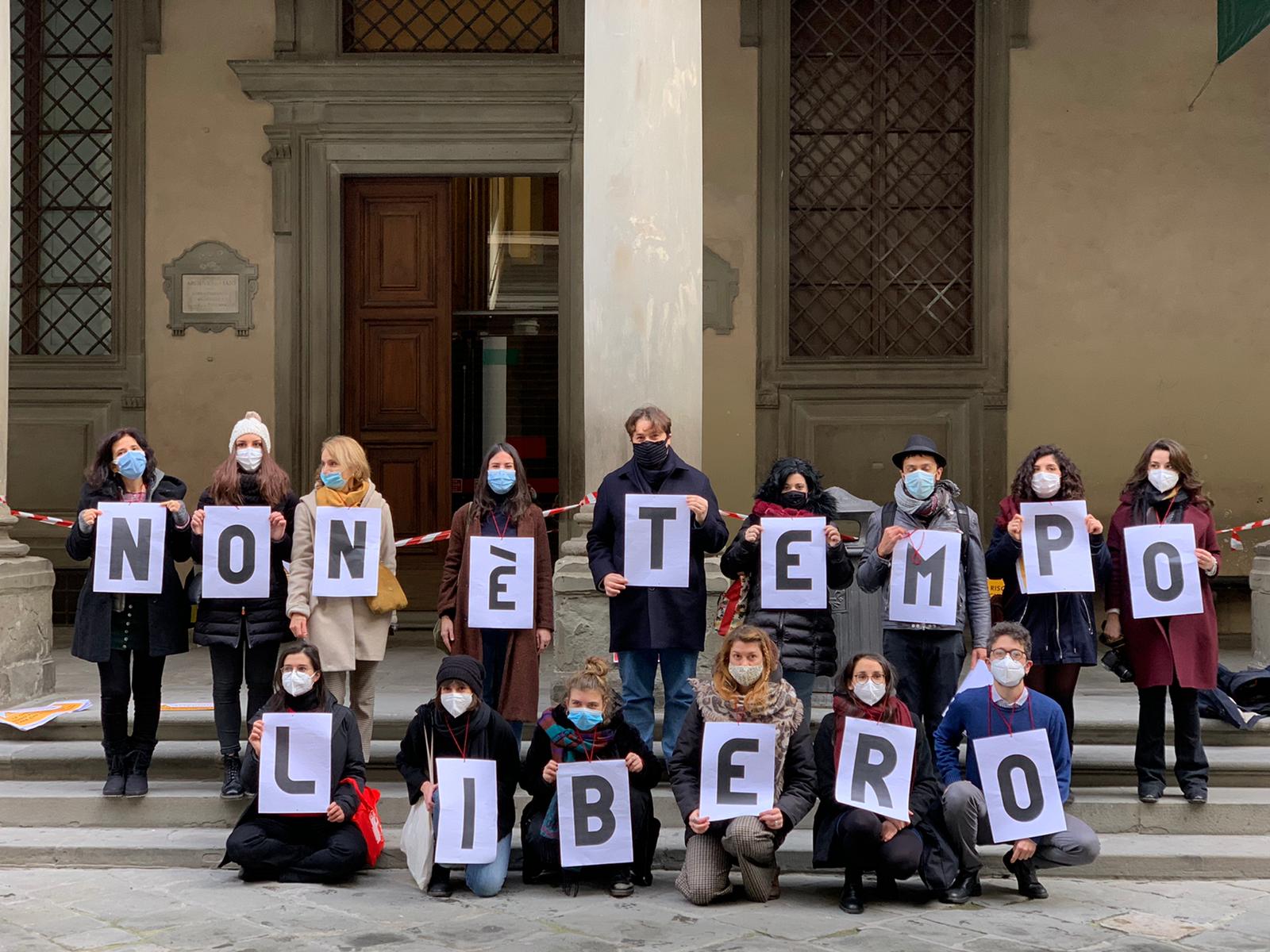 |
| The mobilization of culture: the Florence presidium |
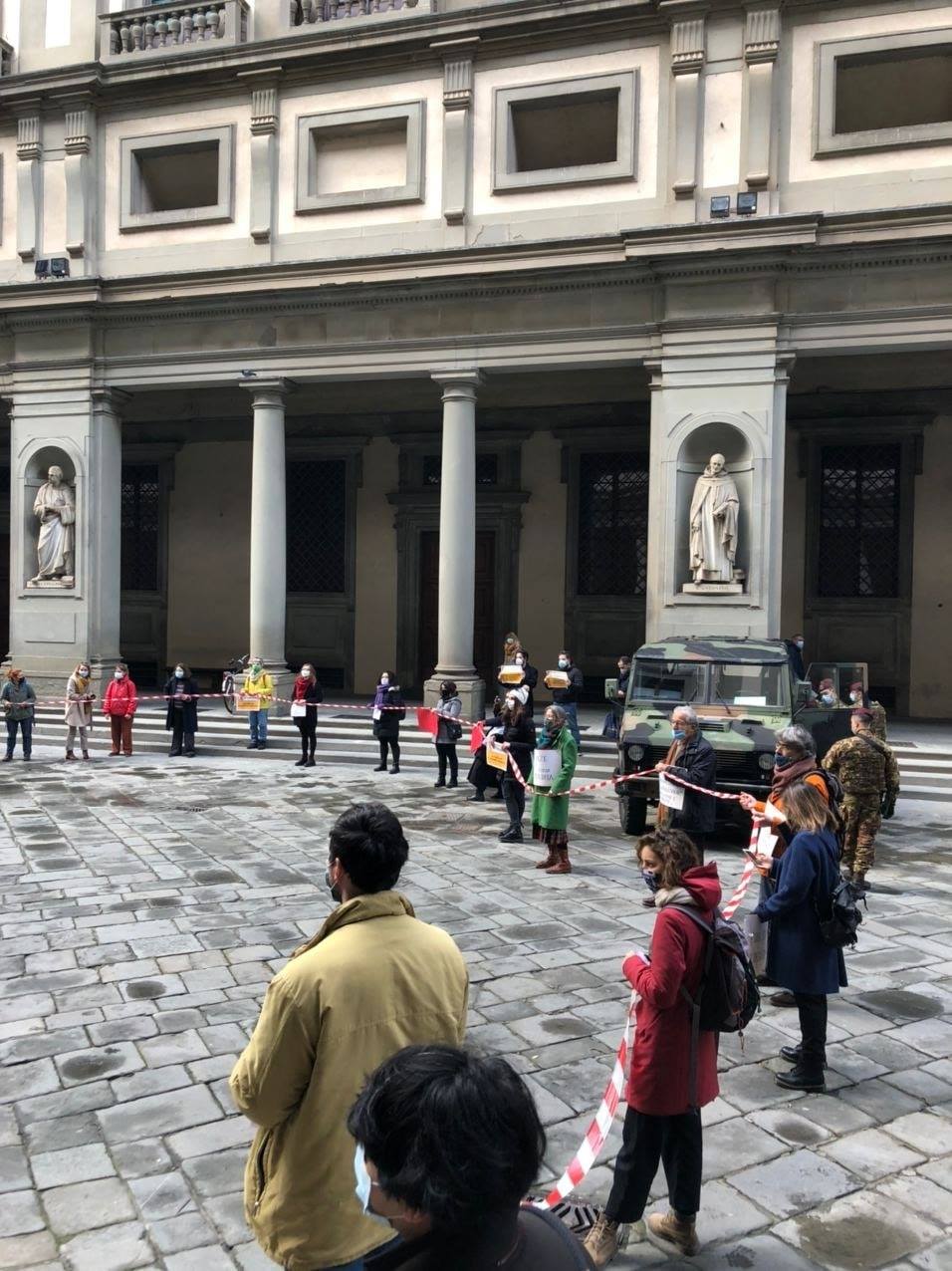 |
| The mobilization of culture: the Florence garrison |
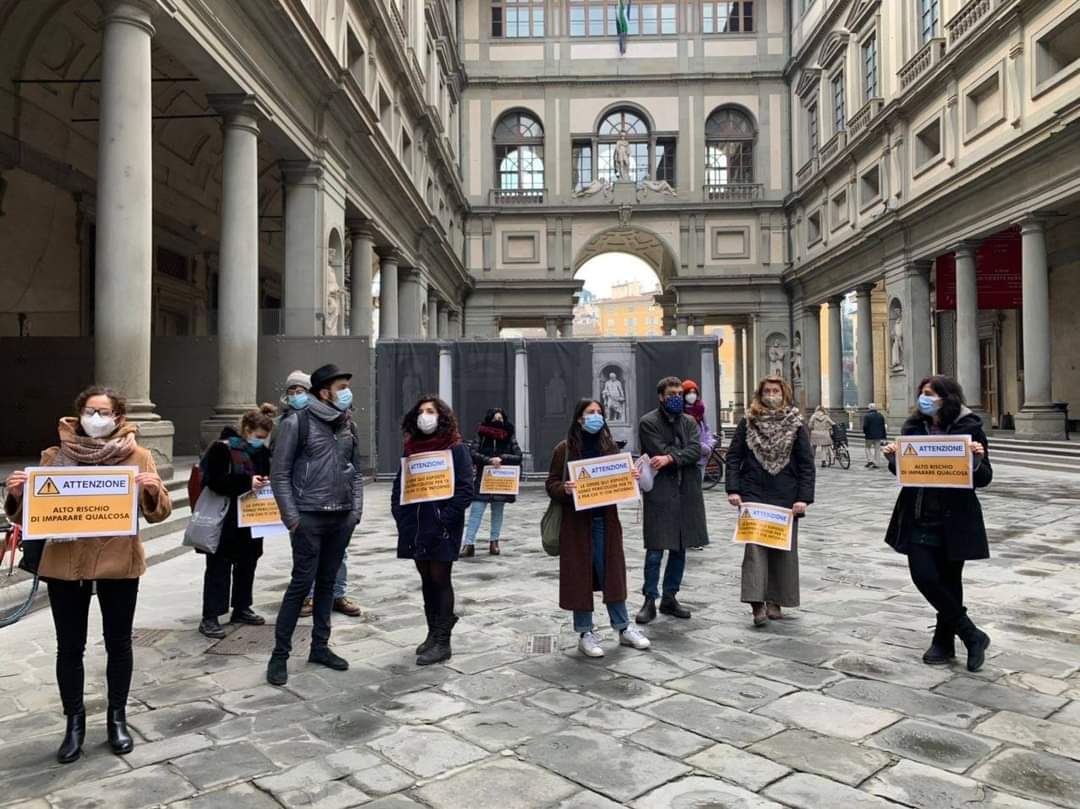 |
| The mobilization of culture: the garrison of Florence |
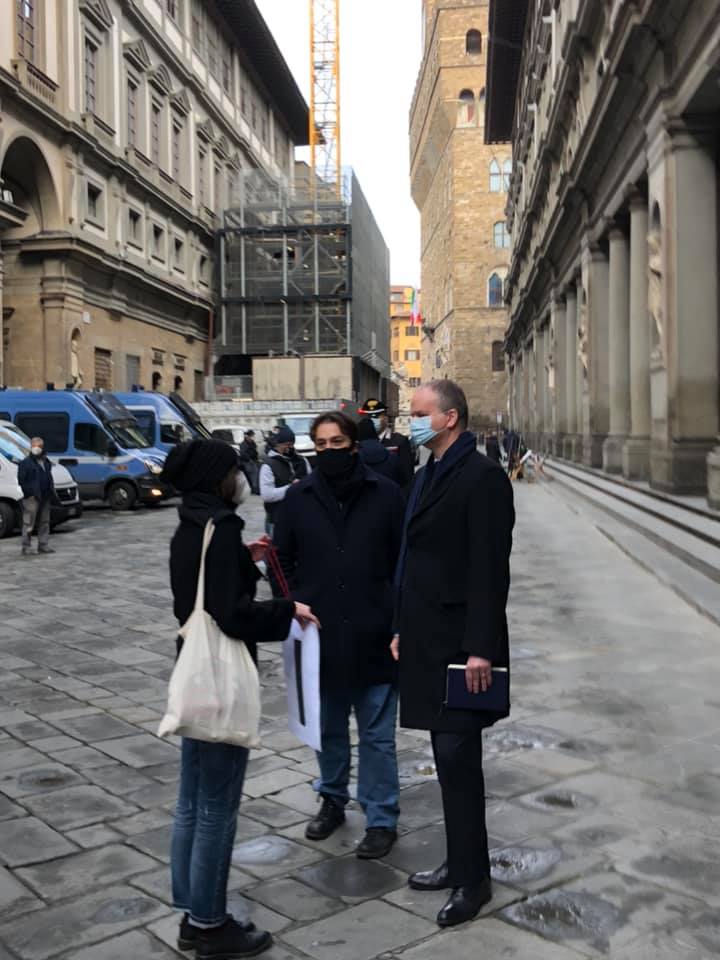 |
| The mobilization of culture: the Florence garrison |
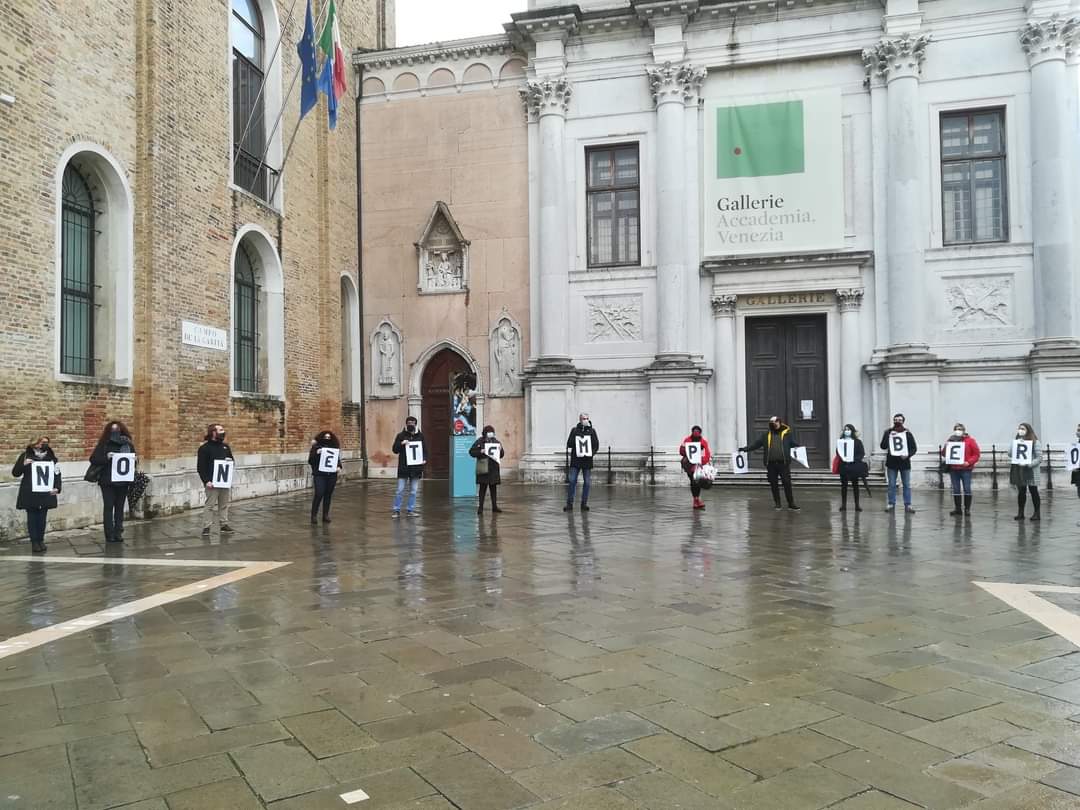 |
| The mobilization of culture: the Venice garrison |
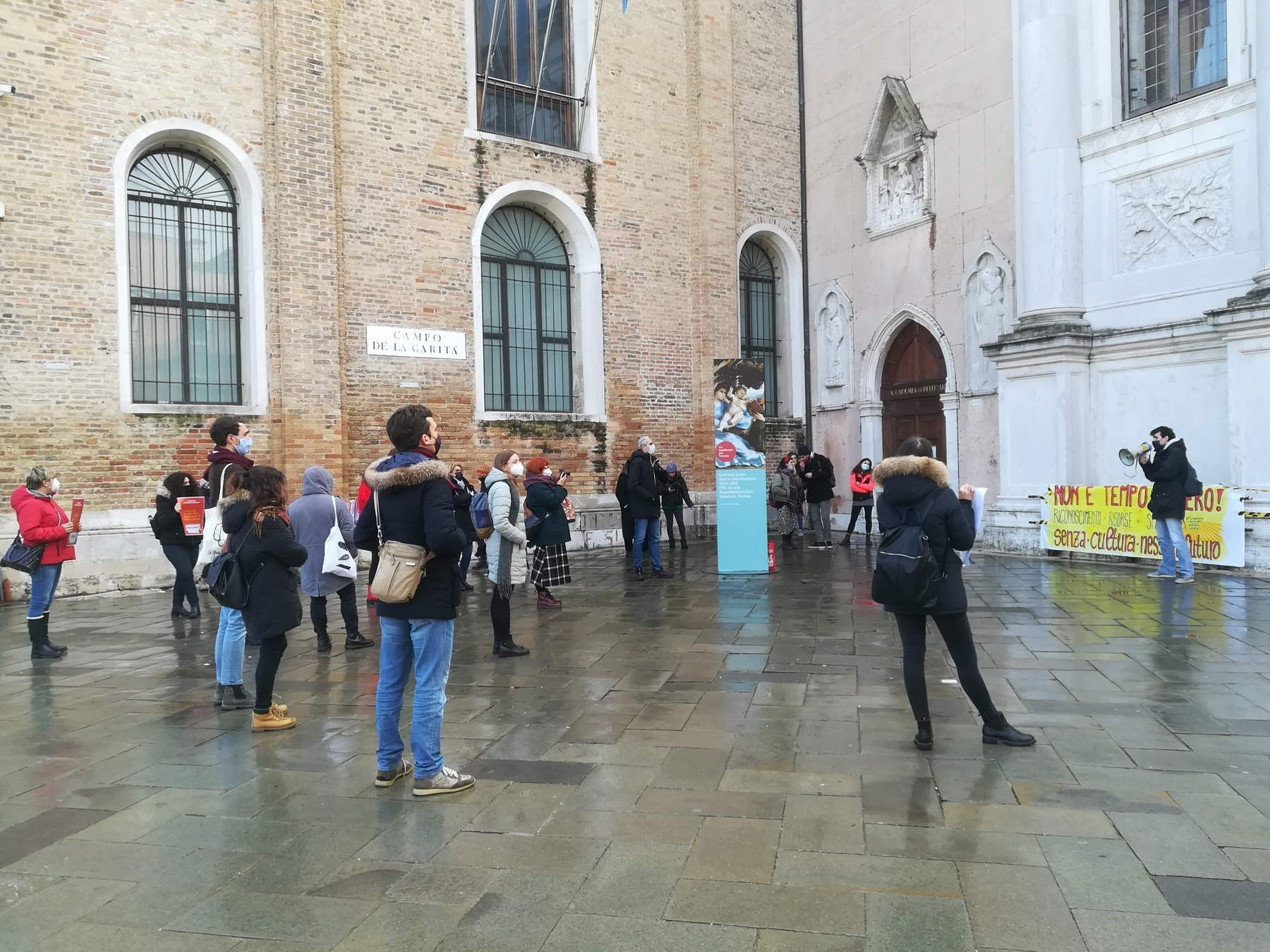 |
| The mobilization of culture: the Venice garrison |
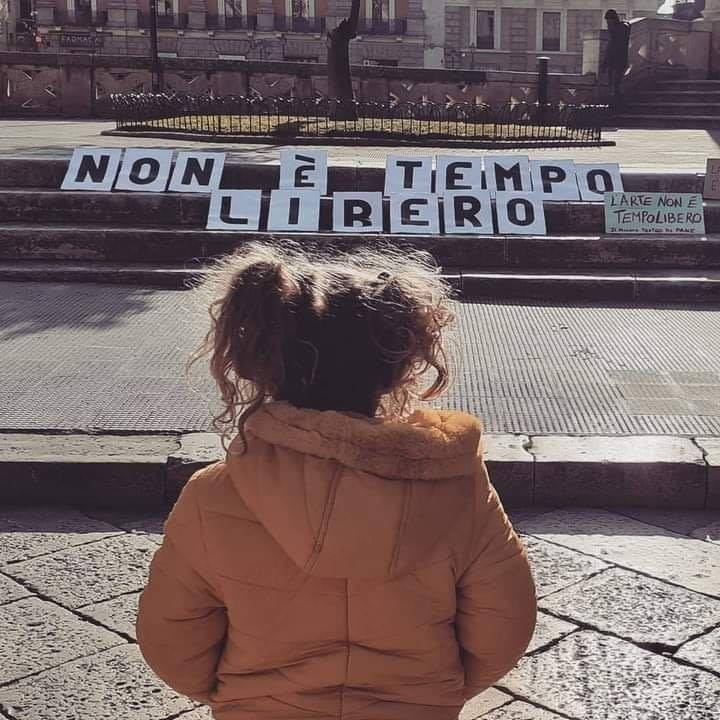 |
| The mobilization of culture: the Lecce garrison |
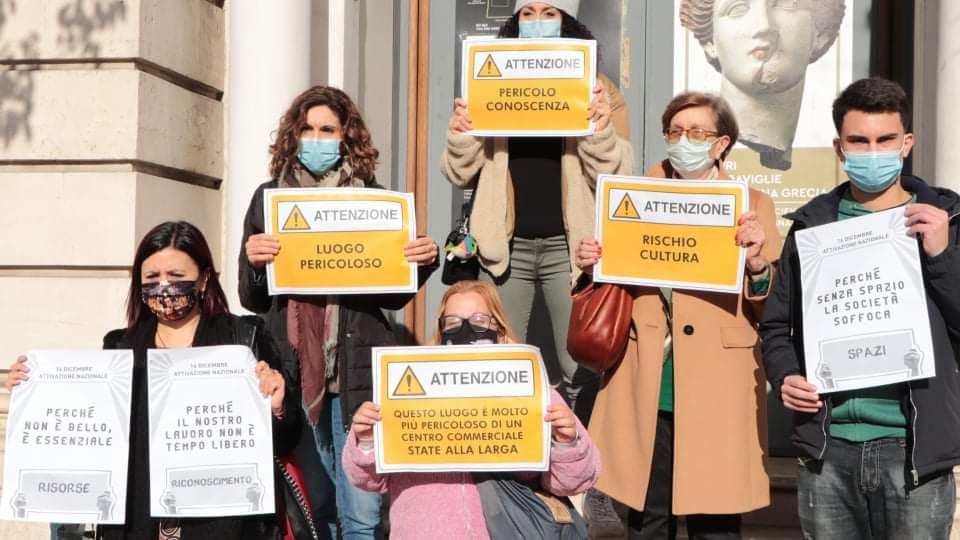 |
| The mobilization of culture: the Taranto garrison |
There was also great participation in the Venice garrison, which took place in front of the Gallerie dell’Accademia. Uniting all the squares is the demand to listen carefully to grassroots demands, as Alice Battistella of the Venice garrison explained. “We are not asking to reopen cultural places indiscriminately, and certainly not at this stage when all the mistakes of these months are coming to the surface,” she declares. “What we are demanding is planning, listening on the part of the government and ministries. A shower of subsidies, which in any case do not reach everyone, and million-dollar investments in useless projects such as the Netflix of Culture cannot be the answer after months and months of navigating in the dark.” Nor is the square calling for a return to “business as usual”: the workers identify the problems precisely in the previous situation, and call for change.
“The day went well,” satisfied Venetian activist Cristina Chiesura tells us. “At the Venetian presidium there were people who were very participatory, also to witness the situation. In addition to the workers, a large representation of Venetian students was also in the square, as well as groups who offered their points of view: one of the most interesting aspects of the day lies in the fact that many passers-by stopped to listen to our testimonies. And above all, the groups that met in the square showed great openness to those who want to bring forward the demands of the sector, and also any criticism. We were able to confront each other at length, and this was also thanks to the tam tam that started on Facebook and Telegram in the past few days: many, including workers and students, made themselves available to start a dialogue, to collaborate, because the need to do something together has become pressing.”
In the south, the Apulian group was among the most conspicuous, activating two garrisons, one in Taranto, where protesters gathered in front of the National Archaeological Museum, and one in Lecce, in Piazza Sant’Oronzo, the main square of the Salento city. “In the square,” explains Rosanna Carrieri of the Lecce presidium of Mi Riconosci, “we were able to gather and tell many different stories that are removed from the media and government narrative, in which they want to make believe that the biggest problem is Christmas lunch or New Year’s Eve dinner. They shut us down preemptively, while shopping continued frantically, and here what has been achieved is to deprive citizens of essential cultural services, without thereby protecting public health. Even in Taranto and Lecce, we symbolically surrounded the cultural sites with red and white ribbon to suggest not only the closure of culture but also the impossibility of working at these sites: cultural workers, students, practitioners, even some artists participated. We gave interviews to local newspapers, collected testimonies, told the experience of the moment. We are not asking for a generalized and indiscriminate reopening of the sites, we are asking for concrete answers, investments and, once and for all, the recognition of our professions.”
Warning: the translation into English of the original Italian article was created using automatic tools. We undertake to review all articles, but we do not guarantee the total absence of inaccuracies in the translation due to the program. You can find the original by clicking on the ITA button. If you find any mistake,please contact us.